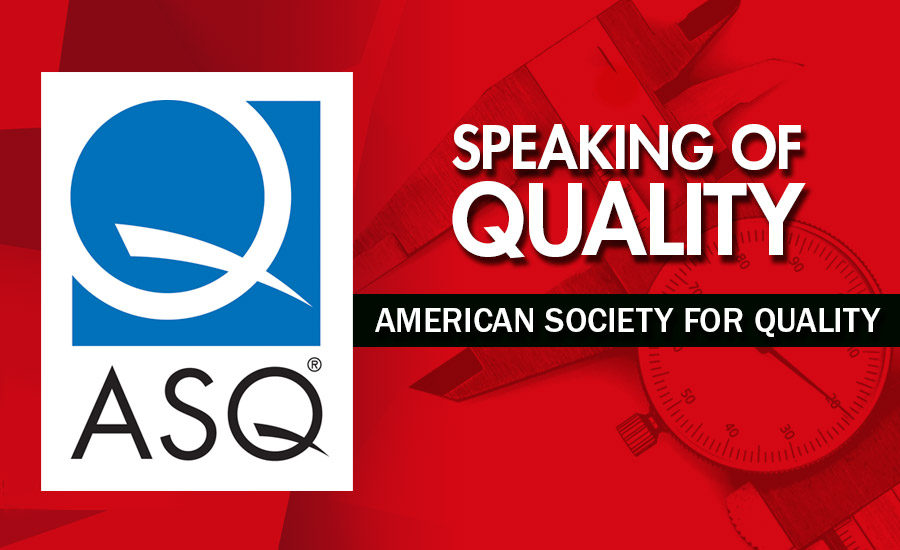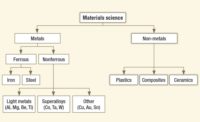Speaking of Quality
An Overview of the Inspection Function
New Technologies Have Increased the Need for Inspection

Quality plays an important role in products and services for customer satisfaction and customer loyalty. Inspection is a function of quality discipline. An inspection is, most generally, an organized examination or formal evaluation activity.
Inspection tools, technologies, and methodologies have evolved in many fields including machine tooling, automotive products, food processing, pharmaceutical, chemical, and electrical and electronics products. In the past, visual inspection was more prominent using simple tools such as microscopes, rulers, Vernier calipers, micrometers, and gages.
INSPECTION EVOLVES
Inspection evolved to viewgraphs, coordinate measuring machines, scanning electron microscopes, etc. Computer-based, automated visual image systems are getting more enhancements. Customers have voiced dissatisfaction with the poor quality in the past. The good news is quality matters now—elevating the importance of inspection.
In the past, artisans making high-quality, distinctive products in small quantities were inspecting their own products 100% of the time. During war time in the 1940s, it became necessary to inspect parts in large quantities, and sampling plans were introduced.
Today, inspection falls into four main categories, namely:
- Visual: appearance, surface characteristics, size, shape, color, etc., using the naked eye, microscope, magnifier, etc.
- Physical or dimensional: measurements using micrometers, depth gages, etc.
- Testing: mechanical properties (tensile strength, electrical characteristics—opens or shorts, parametric or functional, etc.)
- Sensory (touch, smell, taste, etc.)
Inspection can be destructive or nondestructive. Tests such as cross-sectional analysis, tensile strength, etc., fall under destructive testing, where test objects become unusable after the test. Nondestructive testing (NDT) is the examination of an object in a manner that does not affect its future usefulness. NDT is performed to detect internal or external defects in the structure, composition, or properties without affecting the form, fit, or function of the test object. In addition to visual inspection, typical NDT techniques include magnetic particle, radiography (X-ray radiography, gamma-ray radiography), liquid penetrant, electromagnetic, eddy currents, and ultrasonic.
In the future, quality must be built into each stage of the production process to cover all aspects of production (raw materials, facility and equipment, in-process inspection, inspector training). The biggest benefit of automation is that it saves labor, removes inspector fatigue, and improves quality, accuracy, and precision.
Automated optical inspection (AOI) is an automated visual inspection, where a camera autonomously scans the device under test for both catastrophic failure and quality defects. It is commonly used in the manufacturing process because it is a noncontact test method. Automated inspection system (AIS) technologies are in use for very complex and high-volume parts. Three-dimensional vision systems are being implemented throughout a number of inspection applications that previously could not be addressed with conventional 2-D vision systems.
THE QUALITY INSPECTOR
An inspector is a key person in the inspection process. In support of—and under the direction of—a quality professional, an inspector can use the proven techniques to evaluate hardware documentation, perform laboratory procedures, inspect products, measure process performance, record data, and prepare formal reports.
An inspector needs to understand requirements properly, interpret them correctly, and inspect the criteria in their true spirit. In addition to visual skills, inspectors must be able to read and write accurate reports. Finally, inspectors must understand all instructions, which include sampling procedures, reading blueprints, and specifications. Factors such as skills and capability, material, human judgment, environment, sample size, equipment, and method can influence final results.
ASQ’s Inspection Division supports the ASQ Certified Quality Inspector (CQI) process. Certification from ASQ is considered a mark of quality excellence to advance one’s career and boost an organization’s bottom line through mastery of quality skills. A CQI is knowledgeable in applying technical mathematics, metrology, inspection methods, tools and techniques, and basic quality principles.
SUMMARY
To inspect is to carefully examine. The main objective of inspection is to meet customer requirements, wants, and needs. The objective is to prevent defective product flowing down the successive operations and prevent loss to the company. Many characteristics cannot be inspected at the final stage of production. Hence, in-process inspection becomes a necessity. Inspection should not be judgmental, but objective. All inspectors should be well-trained employees. Inspection helps: 1) the product disposition decision-making process; 2) in collecting data in an orderly fashion for actions; and 3) satisfy regulatory and procedural requirements.
New technologies, and advances in existing technologies, have increased the need for inspection. Increased usage of statistical techniques will be employed along with advanced computer tooling using laser and other techniques. Inspection was part of the past, is part of our present, and will also be a part of the future.
Looking for a reprint of this article?
From high-res PDFs to custom plaques, order your copy today!








